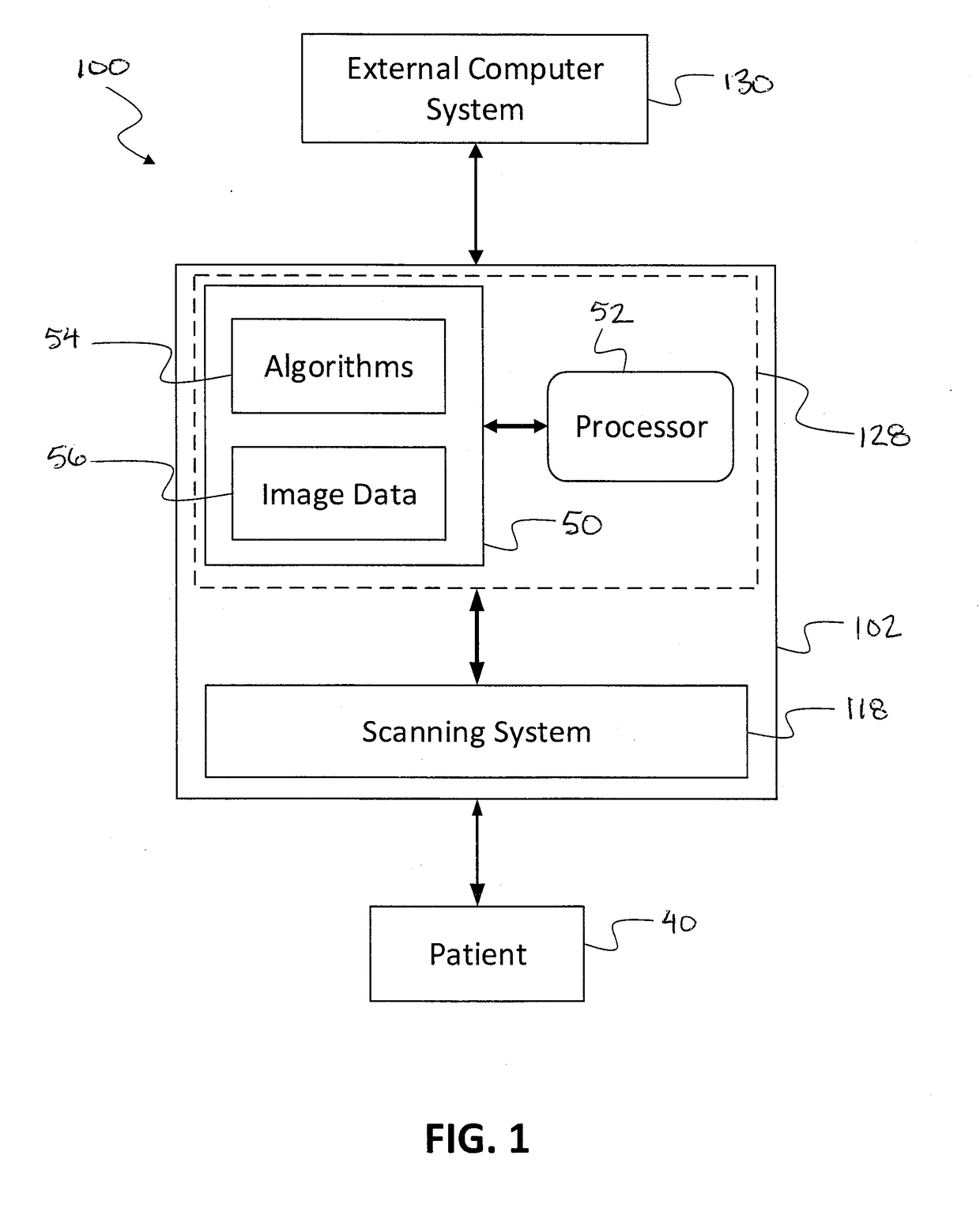Portable ocular response testing device and methods of use
a testing device and ocular response technology, applied in the field of portable ocular response testing devices, to achieve the effect of being convenient to carry around
- Summary
- Abstract
- Description
- Claims
- Application Information
AI Technical Summary
Benefits of technology
Problems solved by technology
Method used
Image
Examples
example 1
Swinging Flashlight Test
[0153]In an aspect, pupillary response scanning device 100 may be configured for performing a swinging flashlight test. FIG. 3A is a logical flow diagram, illustrating one flow 300 of example operations within a swinging flashlight test procedure performed using pupillary response scanning device 100 of the present disclosure. Operations in the flow 300 may include: continuously illuminating both eyes with infrared light from one or more infrared light sources during testing (step 301); capturing at least one reference image of each eye with one or more imaging devices (step 302); illuminating a first eye with visible white light from at least one visible light source in a first eye enclosure for a predetermined duration (step 303); capturing at least one first test image of each eye with one or more imaging devices (step 304); subjecting both eyes to a dark adaptation period under infrared illumination (step 305); illuminating a second eye with visible white...
example 2
Brightness Saturation Test (BST)
[0159]In an aspect, pupillary response scanning device 200 may be configured for performing a BST.
[0160]FIG. 3B is a logical flow diagram, illustrating one flow 310 of example operations within a BST procedure performed using pupillary response scanning device 100 of the present disclosure. Operations in the flow 310 may include: identifying an affected eye and a healthy eye with a swinging flashlight test (step 311) that may be performed by exemplary operations of the flow 300 of FIG. 3A; illuminating the affected eye with visible white light from at least one visible light source for a predetermined duration (step 312); capturing at least one first test image of the affected eye that is subjected to direct light application (step 313); subjecting both eyes to a dark adaptation period under infrared illumination (step 314); illuminating the healthy eye with visible white light from at least one visible light source with a predetermined initial intens...
example 3
Color Discrimination Test (CDT)
[0165]In an aspect, pupillary response scanning device 100 may be configured for performing a CDT. FIG. 3C is a logical flow diagram, illustrating one flow 321 of example operations within a CDT procedure performed using pupillary response scanning device 100 of the present disclosure. Operations in the flow 321 may include: identifying an affected eye and a healthy eye with a swinging flashlight test (step 322) that may be performed by exemplary operations of the flow 100 of FIG. 3A; illuminating the affected eye with visible red light from at least one visible light source for a predetermined duration (step 323); capturing at least one first test image of the affected eye that is subjected to direct light application (step 324); subjecting both eyes to a dark adaptation period under infrared illumination (step 325); illuminating the healthy eye with visible red light from at least one visible light source with a predetermined initial intensity (step ...
PUM
 Login to View More
Login to View More Abstract
Description
Claims
Application Information
 Login to View More
Login to View More - R&D
- Intellectual Property
- Life Sciences
- Materials
- Tech Scout
- Unparalleled Data Quality
- Higher Quality Content
- 60% Fewer Hallucinations
Browse by: Latest US Patents, China's latest patents, Technical Efficacy Thesaurus, Application Domain, Technology Topic, Popular Technical Reports.
© 2025 PatSnap. All rights reserved.Legal|Privacy policy|Modern Slavery Act Transparency Statement|Sitemap|About US| Contact US: help@patsnap.com



